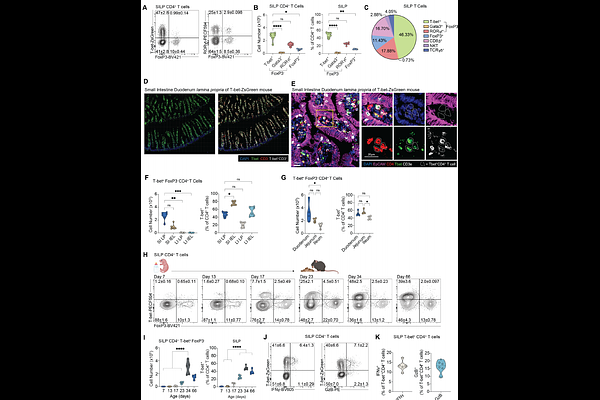T-bet expressing Tr1 cells driven by dietary signals dominate the small intestinal immune landscape

T-bet expressing Tr1 cells driven by dietary signals dominate the small intestinal immune landscape
Ansaldo, E.; Yong, D.; Carrillo, N.; McFadden, T.; Abid, M.; Corral, D.; Farley, T.; Bouladoux, N.; Gribonika, I.; Belkaid, Y.
AbstractIntestinal immunity defends against enteric pathogens, mediates symbiotic relationships with the resident microbiota, and provides tolerance to food antigens, safeguarding critical nutrient absorption and barrier functions of this mucosal tissue. Despite the abundance of tissue resident activated T cells, their contributions to these various roles remains poorly understood. Here, we identify a dominant population of IL-10 producing, T-bet expressing CD4+ Tr1 T cells, residing in the small intestinal lamina propria at homeostasis. Remarkably, these intestinal Tr1 cells emerge at the time of weaning and accumulate independently of the microbiota displaying similar abundance, function and TCR repertoire under germ-free conditions. Instead, the small intestinal T-bet+ Tr1 program is driven and shaped by dietary antigens, and accumulates in a cDC1-IL-27 dependent manner. Upon activation, these cells robustly express IL-10 and multiple inhibitory receptors, establishing a distinct suppressive profile. Altogether, this work uncovers a previously unappreciated dominant player in homeostatic small intestinal immunity with the potential to play critical suppressive roles in this tissue, raising important implications for the understanding of immune regulation in the intestine.